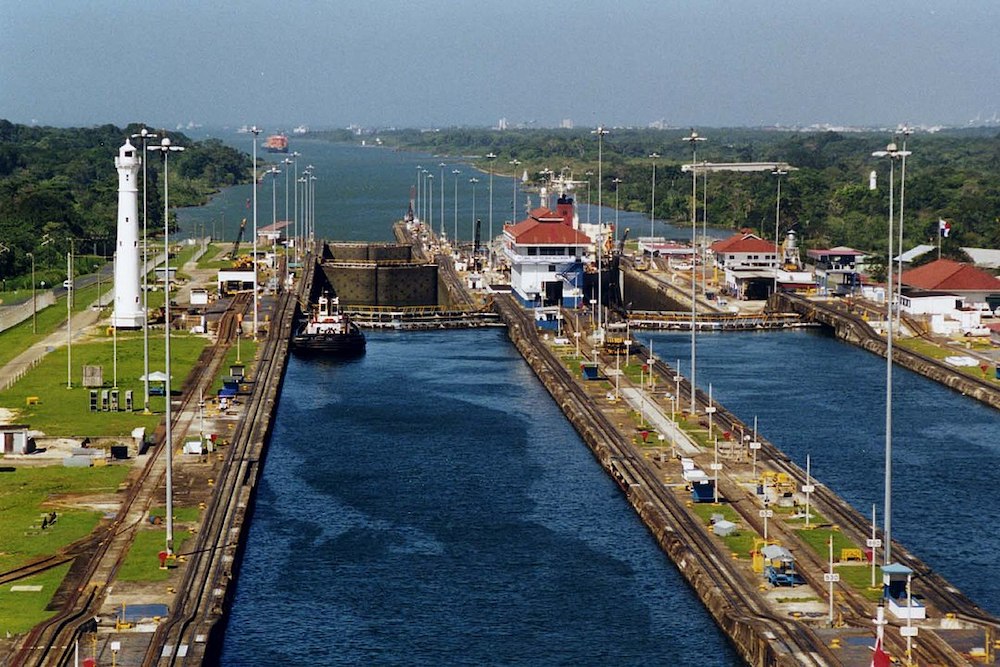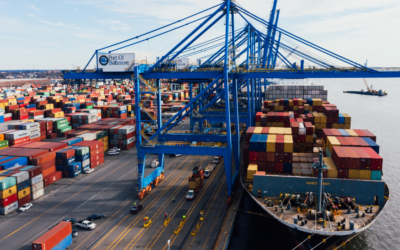Smooth and efficient transportation routes are essential for companies that rely on getting products, goods, and equipment from point A to point B. Unfortunately, in the past few years, companies have been challenged to do that easily with all the impediments placed in the way. Those have included COVID-19 shutdowns, port closures and backups, and supply-chain disruptions. Now, we have another issue to contend with: the Panama Canal pileup.
As one of the most important trade routes in the southern hemisphere, a backup at the Panama Canal could signal major issues down the line. If you’re in the business of import-export, you need to know what’s forecast in the industry and have alternatives available should one route no longer be viable.
What Led to the Panama Canal Pileup?
At the beginning of August, the Panama Canal had 154 ships waiting to go through the canal, with an average wait time of 21 days. The reason: a historic drought that is affecting the area. In what is traditionally its wet season, Panama is seeing one of the driest seasons ever recorded. And without that water available to move vessels through the canal, the Panamanian government has imposed restrictions that were recently extended into mid-2024.
This isn’t the first time that lowered water levels have affected global waterway travel. The Rhine River in Germany and the Mississippi River in the US have both suffered historic lows in recent years, leading to challenges in transporting goods. In fact, the Mississippi may not yet be in the clear, as a reduction in rainfall paired with exceedingly high temperatures is expected to lead to lower water levels this fall and winter. That at a time when crops are being harvested and ready to travel down the river.
You might be wondering how there could be a water shortage in the Panama Canal, given that it extends between the Atlantic and Pacific Oceans. But those aren’t the waterways that feed the canal and enable ships to be lowered or raised accordingly. Instead, that water—some 50 million gallons per ship—comes from the freshwater lakes that surround the canal itself. And meteorologists are uncertain if future weather conditions will reverse the situation.
Restrictions on Canal Travel
Given the reduction in available water to feed the canal, authorities have placed restrictions on passage, from 36 to 32 vessels daily. This includes cutting daily Panamax allotments from 26 to 22 while maintaining the daily maximum of ten vessels through the newer and larger Neopanamax locks.
Most US-bound ships use Neopanamax locks, which is why there isn’t (yet) a huge outcry of concern in the shipping industry about this latest news. For now, the Panama Canal pileup is not affecting wait times for container ships. Instead, it’s the general cargo ships, tankers, dry bulk carriers, liquefied petroleum gas (LPG) carriers, and other non-containerized vessels that are being held up. For those ships, wait times are up in both directions: going east to west and west to east.
The media is still paying close attention to the Panama Canal pileup, however, which is reminiscent of the issues faced at the Port of Los Angeles and Long Beach a couple of years ago.
Not Yet a Major Cause of Concern
Even with lingering fears of another West Coast crisis occurring in South America, authorities say that the Panama Canal pileup is likely temporary. Weather conditions could still improve, and restrictions—although currently extended—may well be loosened earlier than projected.
However, some companies and freight forwarders are already considering other options. For shipments coming from southern China, the Suez Canal could be one of them. But not all Chinese cargo can take this route. When traveling from northern China via the Suez, vessels will add seven to 14 days to their journey, which can have a huge impact on timelines.
What If the Situation Continues?
Although no one is yet ringing the alarm bells about the Panama Canal pileup, the situation could change quickly, especially as we head into the holiday season. US ports are currently predicting their highest cargo volumes since August 2022, with holiday shipping congestion typically increasing between July and October.
That’s why it’s imperative that companies have alternatives in mind to deal with potential challenges in the supply chain and shipping backups such as the Panama Canal pileup. At Cyclone Shipping, we are an experienced freight forwarder and review all the options to ensure we have a primary route as well as alternatives should your shipments be delayed. Ready to take the concern of getting your products and goods from one place to the other? Contact us to learn how we can help.




